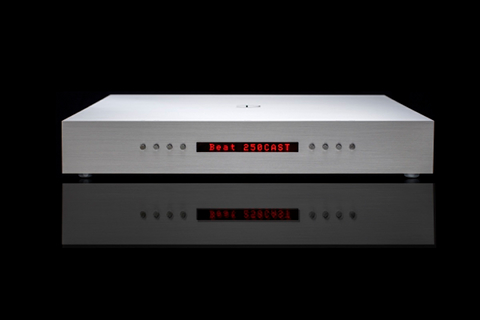about Audio, High Fidelity
& Home Entertainment technologies
pid: 607-2025/10/01 (v1.2)
Privacy Policy

Source: Press Release, Last Accessed: 2017/04/27
The Densen B-250 has established itself as a reference preamplifier on the high end market over the years. Now Densen introduces the B-250CAST. Taking many of the innovations from the B-275 Super Leggera preamp, the new preamplifier offers a new level of performance, supported by some advanced solutions.
The volume level is controlled by an extremely precise 200-step/0.5dB resolution attenuator made of Vishay metal film resistors, which is switched by relays controlled by a microprocessor. In comparison with a normal volume potentiometer of the kind used in the majority of all preamps, the microprocessor controlled attenuator has virtually no self-induced noise and an extremely low distortion, Densen states.
The B-250CAST accepts the DP-07 MM RIAA stage and there is, also, the possibility of upgrade with the DNRG, 1NRG or 2NRG external power supplies. According to the press release, the amplification stages are all refined developments based on advanced Class A designs, which have been encapsulated on the board to avoid any kind of interference with the delicate signal. The output stage is a dual mono design with a huge filter capacity (100.000uF).
To support the Google CAST receiver, the Densen B-250CAST features a dedicated low noise Densen CAST power supply and a dedicated optical input, allowing the Google CAST to perform at its best, with the highest possible data quality. Densen has even developed a dedicated power cord to connect the Google CAST to the B-250CAST preamp, which is shielded, to avoid interference and a Toslink cable to complete the setup.
The digital signal from the Google CAST is converted to analogue using the build in DAC which supports up to 192/24 streams, allowing for future upgrades of the Google CAST technology with ease. The analogue stage is a discrete design, using ultra-fast transistors, and works in Class A. The DAC can be upgraded if needed, without having to change the complete B-250CAST circuit. The preamplifier will support NAS drives as storage, using BubbleUPnP and other similar programs.
For more information: http://densen.dk/

